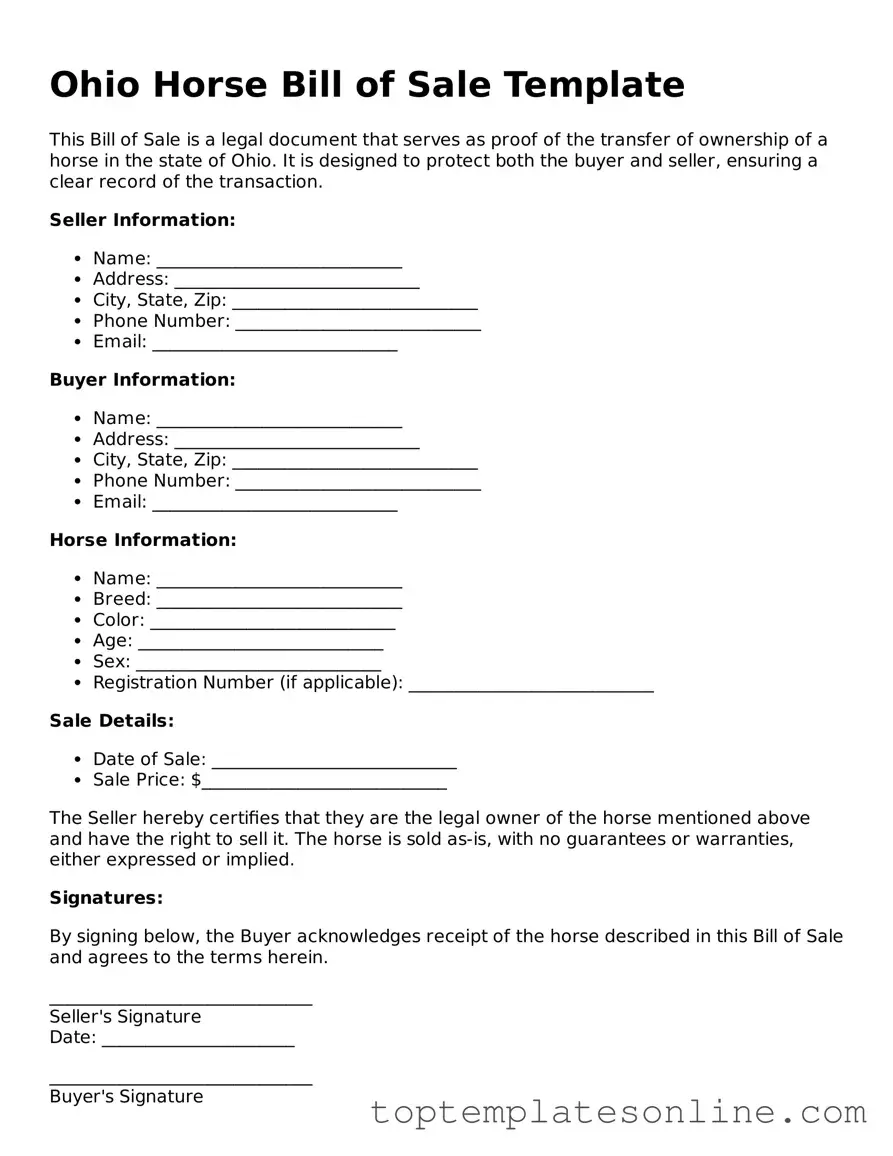Blank Horse Bill of Sale Template for Ohio State
The Ohio Horse Bill of Sale form is a legal document that records the sale and transfer of ownership of a horse in the state of Ohio. This form serves to protect both the buyer and the seller by providing a clear record of the transaction. Understanding its components is essential for ensuring a smooth and lawful transfer of ownership.
Customize Horse Bill of Sale Here
